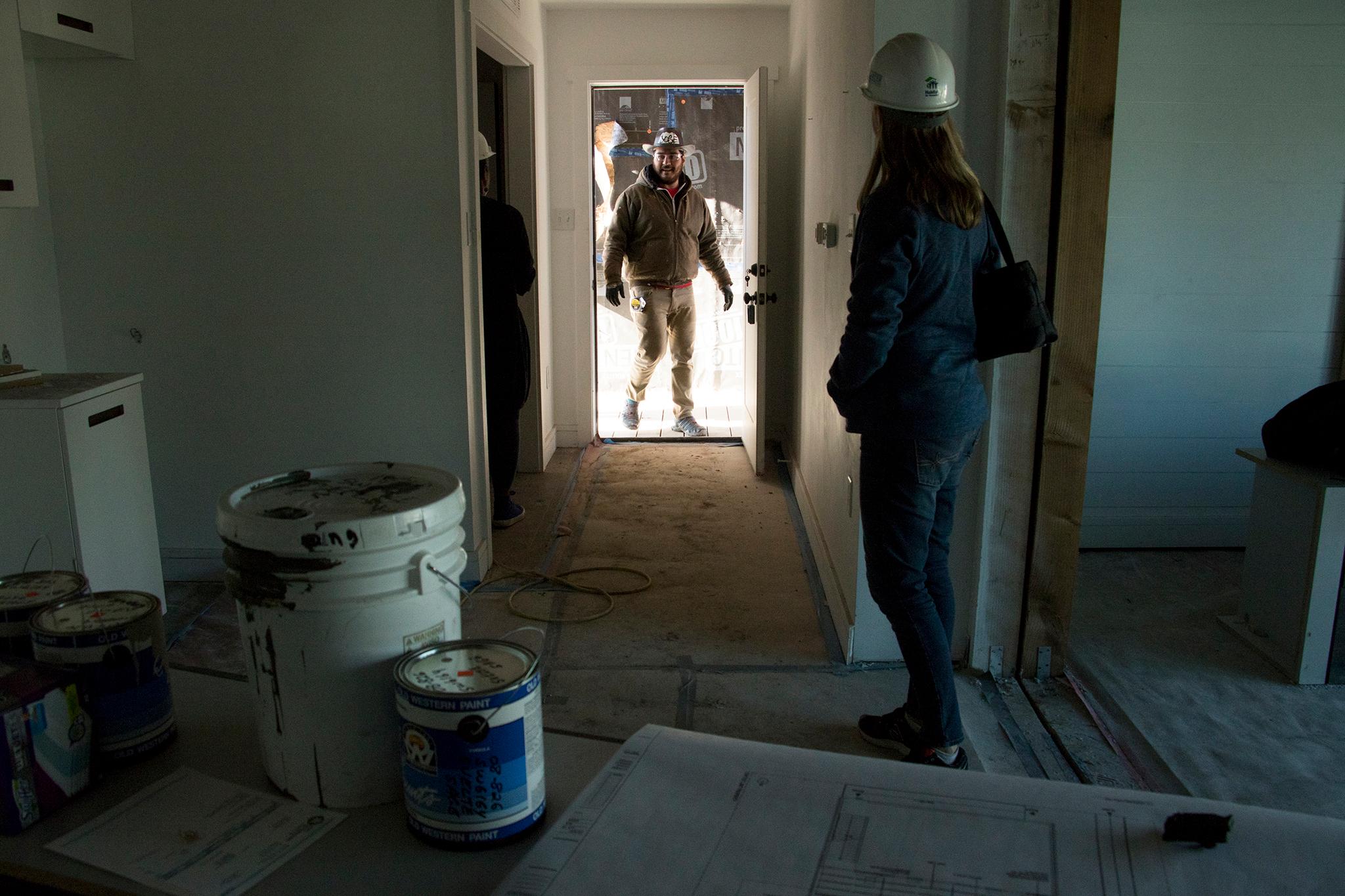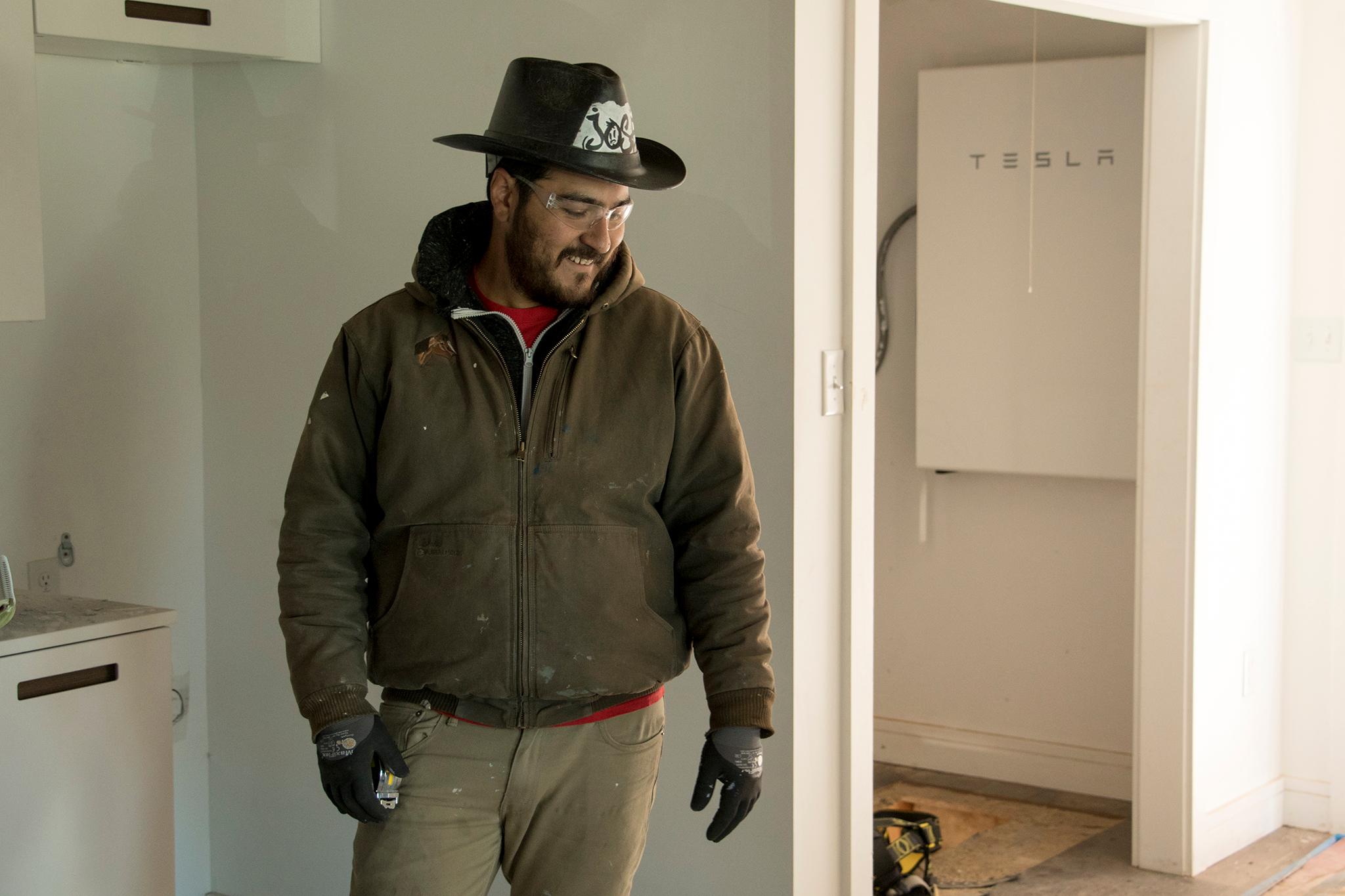The usual Habitat for Humanity drill is to put drills -- and hammers, saws, paint brushes -- in the hands of families and help them build their own homes.
A house in Denver's College View neighborhood shows the nonprofit is willing to innovate in many ways. First, the two-bedroom came to Habitat already built. Second, its design may make you feel like the 22nd century has come to west Denver.
Sure, I spotted at least one other house in the neighborhood with an array of solar panels on the roof. But in addition to being solar-powered, the sleek box of a house at 2780 West College Avenue features a Tesla battery, wool insulation, tiles and ceramics made of recycled materials. A light wall allows for optical fibers to take natural lightning into the bathroom. The family that one day moves in likely won't have to pay any energy bills, and a gray water system will keep water bills low as well.
The home was donated to Habitat by the students from the University of California, Berkeley and University of Denver who teamed up to design and build it as an entry in the U.S. Department of Energy's Solar Decathlon when it was held in Denver in 2017. The DU-Berkeley team came in third overall in that international competition testing sustainable, energy-efficient ingenuity. A Swiss team was first and the University of Maryland second in a competition that saw a sudden neighborhood of a dozen high-tech homes sprout at the 61st & Peña Station on the University of Colorado A Line commuter rail.
Habitat construction supervisor Jose Elizondo describes himself as an environmentalist who likes to tinker with technology. He could see someone like himself moving into 2780.
"This is one of those really special houses where I think the perfect family is going to pop up" wanting to move in, Elizondo said.


Robyn Burns, Habitat for Humanity of Metro Denver's director of communications and marketing, said the search for that low-income family would begin early next year. The home will be sold to the family with an affordable mortgage. Family members will also have to put in 200 hours of sweat equity.
Most of the Solar Decathlon structures were moved soon after the competition ended. The DU-Berkeley had offered the home to Habitat early on, but it took more than a year to determine how to fit it into the nonprofit's plans.
"It's pretty rare for a whole house to be donated to us," Burns said.
She added that a few complete homes have come to Habitat in the past in wills. Those did not have to be moved.
Habitat recently divided the home into two pieces to move it 20 miles from the competition site to be set on a foundation in College View, where it is part of a Habitat project of 16 homes across the street from the neighborhood elementary school. Creating an entire neighborhood is another recent Habitat innovation as the nonprofit seeks to make the most efficient use of land and other resources. Energy efficiency, which ensures homes are as affordable for families to live in as they were to acquire, is also part of the design of Habitat homes, though not usually to the extremes seen in the DU-Berkeley home, Burns said.

Thursday, the line where the home had been divided for transport was still visible. Habitat volunteers are working on sealing the gap. Two decks that the student designers built were stacked out back, awaiting re-attachment. Elizondo, who is supervising the 16-home project for Habitat, said the house also needed a bit of electrical work and some clean-up after sitting uninhabited for more than a year.
Dave Arnett, a retired Intel executive and longtime Habitat volunteer, was working Thursday on a nearby Habitat house that is a project of the Loaves and Fishes faith group. While he said the DU-Berkeley house was a design departure for Habitat, he saw it as fitting into the nonprofit's philosophy.
"They're not restricted to a box," he said. "They keep trying ways to bring homes and safe, clean efficient housing to folks who might not otherwise have that opportunity."













